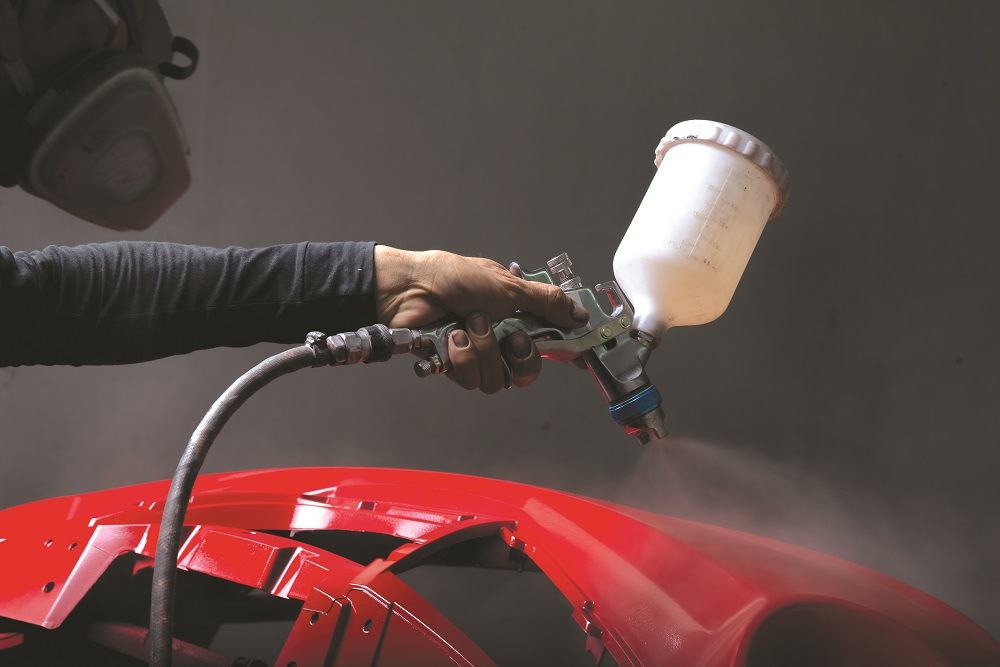Eco-Friendly Car Paint Solutions: Waterborne Paints and Sustainable Alternatives
In an era marked by growing environmental consciousness, the automotive industry is undergoing a significant transformation. One aspect that often goes unnoticed but plays a crucial role in the industry’s sustainability efforts is car paint. Traditional automotive paints have long been associated with harmful volatile organic compounds (VOCs) and a negative environmental impact. However, eco-friendly car paint solutions, such as waterborne paints and sustainable alternatives, are emerging as game-changers. In this article, we’ll delve into these innovative paint options and their benefits for both the environment and your beloved vehicle.

The Environmental Impact of Traditional Car Paint
Before we explore eco-friendly alternatives, it’s essential to understand the environmental drawbacks of conventional automotive paints. Traditional solvent-based paints contain high levels of VOCs, which are released into the atmosphere during the painting process. These VOCs contribute to air pollution and can have adverse health effects on both automotive workers and the general population. Additionally, the production and disposal of solvent-based paints generate hazardous waste.
Read more: The Evolution Of Car Paint Colours: From Classics To Modern Tones
Enter Waterborne Paints
Waterborne paints have gained traction as a more environmentally responsible alternative to traditional solvent-based paints. These paints use water as a carrier, reducing the need for harmful solvents. Here are some key advantages of waterborne paints:
1. Reduced VOC Emissions
Waterborne paints contain significantly fewer VOCs than their solvent-based counterparts. This reduction in emissions leads to improved air quality, particularly in automotive paint shops.
2. Lower Health Risks
Automotive painters and workers are exposed to fewer health risks when using waterborne paints. The absence of toxic fumes makes the workplace safer and healthier.
3. Enhanced Color Matching
Waterborne paints often provide better colour accuracy and consistency, ensuring that your car’s finish looks pristine.
4. Compliance with Regulations
Many regions worldwide have stringent regulations regarding VOC emissions. Waterborne paints help auto manufacturers and repair shops meet these environmental standards.
Sustainable Alternatives to Consider
While waterborne paints are a significant step towards eco-friendliness, there are other sustainable paint alternatives worth exploring:
1. Powder Coating
Powder coating is an environmentally friendly painting method that uses a dry powder applied electrostatically to the car’s surface. It produces minimal waste, emits no VOCs, and can result in a durable finish.
2. Bio-based Paints
Bio-based paints incorporate renewable materials like plant oils and resins. These paints are biodegradable and have a lower environmental impact during production and disposal.
3. UV-Cured Paints
UV-cured paints use ultraviolet light to dry and harden the paint instantly. This process consumes less energy and produces no harmful emissions.
FAQs
1. What are VOCs, and why are they a concern in traditional car paints?
VOCs, or volatile organic compounds, are chemicals that can evaporate into the air and contribute to air pollution. In traditional car paints, high levels of VOCs are used as solvents, and their release during the painting process is harmful to the environment and human health.
2. How do waterborne paints differ from solvent-based paints?
Waterborne paints use water as a carrier instead of harmful solvents. They contain fewer VOCs, resulting in reduced emissions, improved air quality, and a safer working environment.
3. Are waterborne paints as durable as solvent-based paints?
Yes, waterborne paints can be just as durable as solvent-based paints when applied correctly. They often provide better colour accuracy and consistency, ensuring a long-lasting finish.
4. Are there any special considerations when applying waterborne paints?
Yes, waterborne paints may require different application techniques and equipment than solvent-based paints. Painters and auto shops need to adapt to these changes for successful results.
5. What is powder coating, and how does it compare to traditional painting methods?
Powder coating is an environmentally friendly method that applies a dry powder to the car’s surface, which is then baked to create a durable finish. It produces minimal waste, emits no VOCs, and can be more resistant to chips and scratches compared to traditional paint.
6. Are bio-based paints readily available for automotive use, and do they perform well?
Bio-based paints are becoming more available for automotive applications. These paints incorporate renewable materials and are biodegradable. Their performance can be comparable to traditional paints while offering a reduced environmental impact.
7. What are UV-cured paints, and how do they contribute to sustainability?
UV-cured paints use ultraviolet light to dry and harden the paint instantly. This process consumes less energy and produces no harmful emissions, making it an environmentally friendly option.
8. Are there any regulations or certifications for eco-friendly car paint products?
Various regions and organizations have regulations and certifications related to eco-friendly automotive paints. Look for products that meet these standards to ensure you are using genuinely sustainable paint options.
9. Can I retrofit my existing car with eco-friendly paint, or is it primarily for new vehicles?
Eco-friendly paint options are suitable for both new and existing vehicles. If you’re considering a repaint or restoration, you can choose these environmentally friendly options.
10. How can I find a professional auto shop that offers eco-friendly car paint solutions in my area?
You can search online, ask for recommendations from eco-conscious friends or automotive forums, or contact local auto body shops and inquire about their eco-friendly paint options.
By considering these FAQs, you can make informed choices about eco-friendly car paint solutions and sustainable alternatives, contributing to a greener and more environmentally conscious automotive industry.
Conclusion
As eco-conscious consumers, we have a responsibility to make sustainable choices, even when it comes to something as seemingly mundane as car paint. Waterborne paints and sustainable alternatives are not only reducing the automotive industry’s environmental footprint but also ensuring a healthier future for all of us. When considering a car paint job or restoration, it’s worth exploring these eco-friendly options to contribute to a cleaner and more sustainable planet while still enjoying a beautiful finish on your vehicle. Make the eco-friendly choice, and drive with a conscience.
Remember, choosing eco-friendly car paint solutions is not just a trend; it’s a commitment to a greener, cleaner future for generations to come. So, when you’re ready to give your car a fresh coat of paint, consider the environmentally friendly options and drive with pride knowing you’ve made a positive impact.

